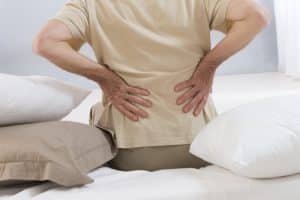Beating the Pains of Aging
December 4, 2018
Many people believe that dealing with pain of some sort is a natural part of aging, and to some extent, that is true. As you age, your ligaments and tendons that hold your joints together start to 
These natural processes of aging can cause aching, soreness, and pain. But there are things you can do about it. Staying active and feeling younger is possible, but it will take some work on your part. Stretching, strength-training, and cardio exercise are both helpful when it comes to increasing blood flow, building core muscles, and reducing pressure on joints and bones. Here’s a little more information about each of these strategies:
- Improve flexibility — Stretching can help prevent aches and pains by improving the pliability of ligaments that support your joints. Simple stretches daily can make a big difference, as can yoga.
- Get in more cardio — While aging is likely a factor, extra weight you have gained as you’ve gotten older may be playing a part as well. Combined with a healthy diet, cardiovascular training is a great way to take some of the load off your body and decrease aches and pains. Start small and do what you can, but a good rule of thumb is to aim for 30 to 60 minutes of cardio each day.
- Strength training — Strengthening the muscles that cross your joints helps them act more effectively as stabilizers. Strengthening your trunk muscles is especially important for relief of back pain, and strengthening your core (stomach, back, rear, and thighs) is often recommended by orthopedic surgeons.
Other ways to ease the pain
The key is to listen to your body. Ordinary joint soreness can be treated by scaling back on certain types of activities, icing the joint, and taking over-the-counter (OTC) anti-inflammatory medications as needed. Here are some other ideas:
- The American Orthopaedic Association says that most mild sprains and strains can be treated through the RICE method — rest, ice, compression, and elevation.
- Physical therapy is another good option, and your therapist will be able to show you specific exercises that may help you move better and relieve pain.
- Some people find that using a heating pad is helpful in relieving pain, especially when joints are stiff.
If the pain you are experiencing persists and is accompanied by swelling, or if it interferes with your normal daily activities, you should seek a medical evaluation.
Southside Pain Specialists is your one-stop for pain management with a multitude of pain relief options tailored to your specific needs. Southside Pain Specialists follows the standards of the American Society of Interventional Pain Physicians, The American Board of Pain Medicine and the International Spinal Injection Society and works hard to provide patients comprehensive, caring pain relief when they need it most. Check out our website or contact us today at 205.332.3155 to learn more.
